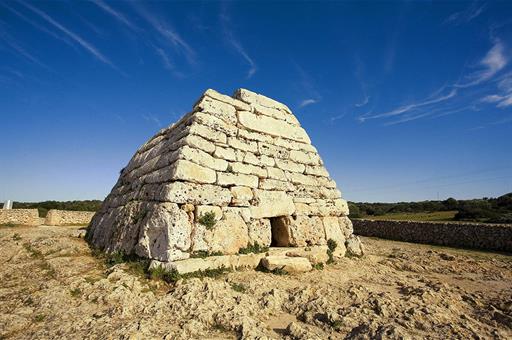Spain achieves with 'Menorca Talayotic' the 50th inscription on the UNESCO World Heritage List
News - 2023.9.18
With this new inscription, Spain now has 50 World Heritage sites in its territory, a number that makes it one of the countries with the most properties registered on this list and one of the most internationally recognised for the variety, richness and quality of its heritage. Only the top five are more than half a hundred World Heritage properties.
The candidacy, promoted by the Consell Insular de Menorca, has been an example of collaboration between administrations: the Ministry of Culture and Sport, the autonomous government of the Balearic Islands and the Consell de Menorca itself. Institutional support and excellent technical work have been key to its successful inscription on the World Heritage List, after the nomination has been maturing for more than a decade.
An exceptional case of a living archaeological and monumental landscape
Menorca has one of the highest densities of prehistoric archaeological sites in inhabited territory in the world. Talayotic Menorca. An island cyclopean odyssey' brings together the nine components that best represent the constructions of an island culture that evolved in conditions of relative isolation. From the mid Bronze Age to the Roman occupation, a rich sample of prehistoric monuments and sites has been selected, including settlements, burial spaces, shrines and sacred sites that have survived in an excellent state of preservation. Among them, certain exceptional manifestations stand out that are unique and exclusive to Menorca, such as the burial navetas, the taula enclosures, the monumental circular houses and the talayots.
Furthermore, 'Menorca Talayotic' provides an exceptional testimony of a prehistoric culture associated with the sky. The orientations of certain monuments illustrate the relationship between this culture and the sky. Another of the features that guarantee its exceptional nature is the harmonious coexistence that the various cyclopean constructions on the island have developed throughout history with its inhabitants. These monuments are set in a slightly altered Mediterranean landscape with features very similar to those of prehistoric times. The successive stone traditions, the original settlement patterns and the spiritual functionality of the monuments reflect a distinct identity. They are a source of pride for the island and therefore remain alive in the landscape of present-day Menorca. In this way, 'Talayotic Menorca' today bears witness to an exceptional case of a living archaeological and monumental landscape.
44th World Heritage Committee
At this session of the Committee, the inscription of the property on the World Heritage List, the ancient Jericho, also called Tell es-Sultan, submitted by Palestine, and the natural site of the Odzala-Kokoua forest massif in the Congo were also declared World Heritage sites. The World Heritage Committee is composed of 21 countries elected by the 194 State Parties of the UNESCO Convention for the Protection of the World Cultural and Natural Heritage (1972) and is the executive body of this international convention. As such, it is responsible for deciding which new sites qualify for inscription on the World Heritage List, upon nomination by State Parties.
UNESCO Convention concerning the Protection of the World Cultural and Natural Heritage (1972) and is the executive body of this international convention. As such, it is responsible for deciding which new sites qualify for inscription on the World Heritage List, upon nomination by State Parties.
Non official translation





